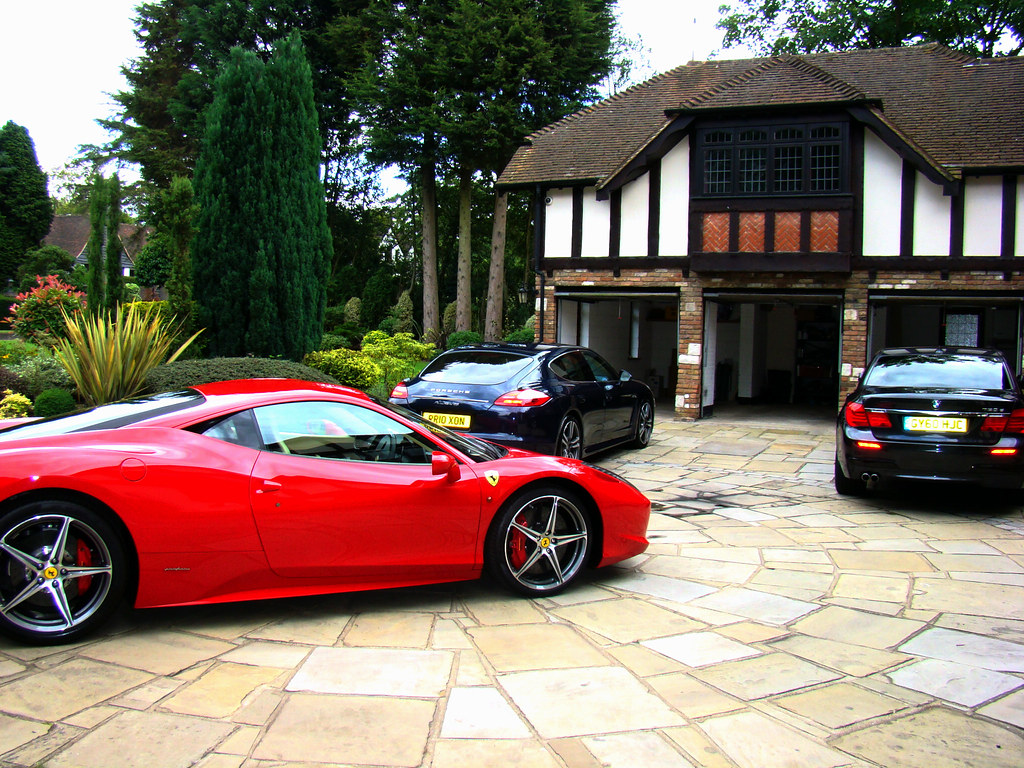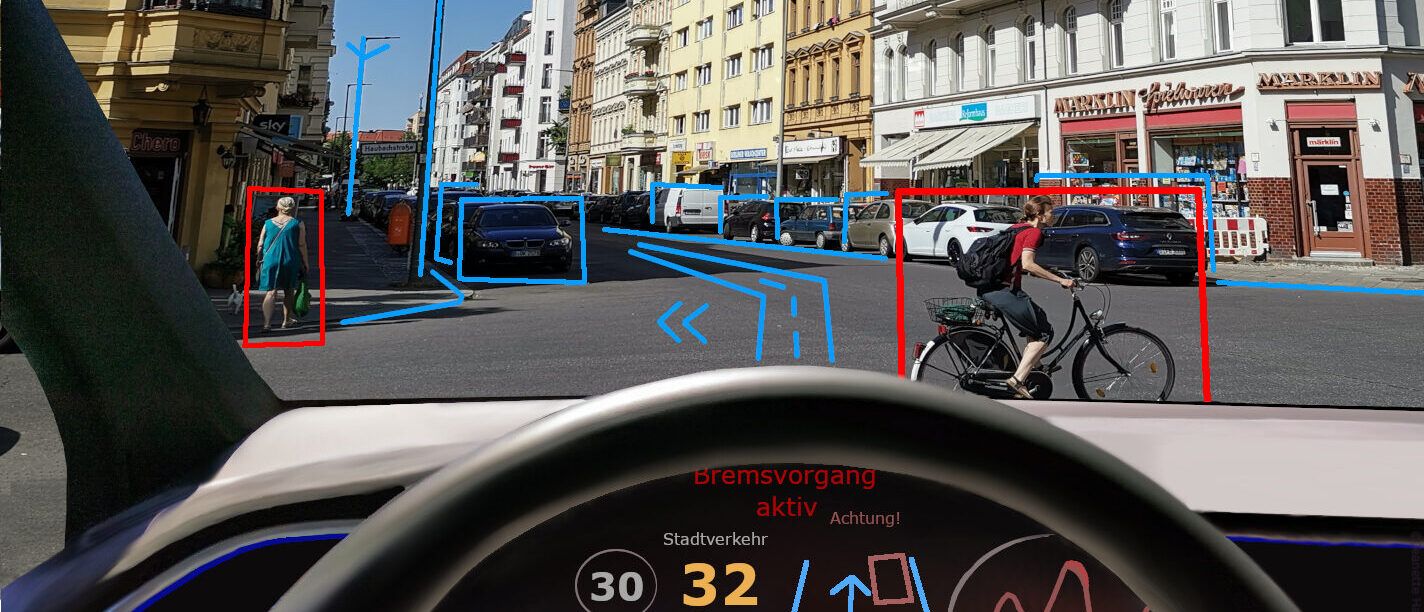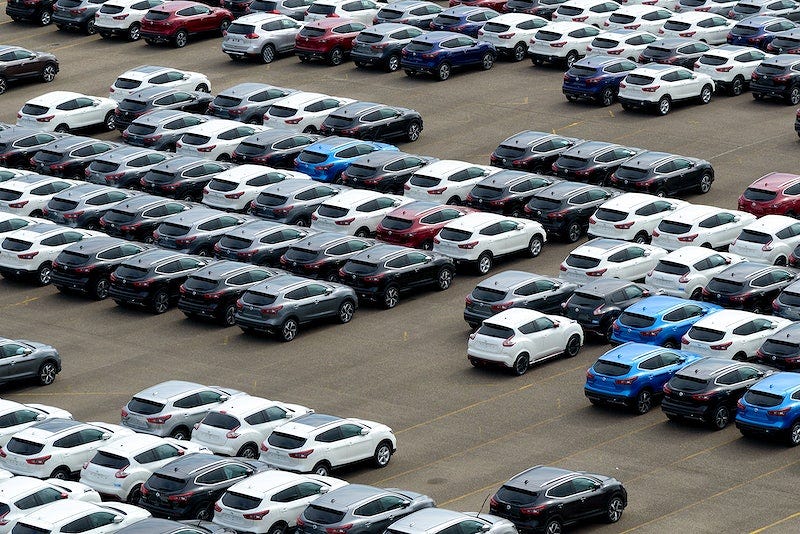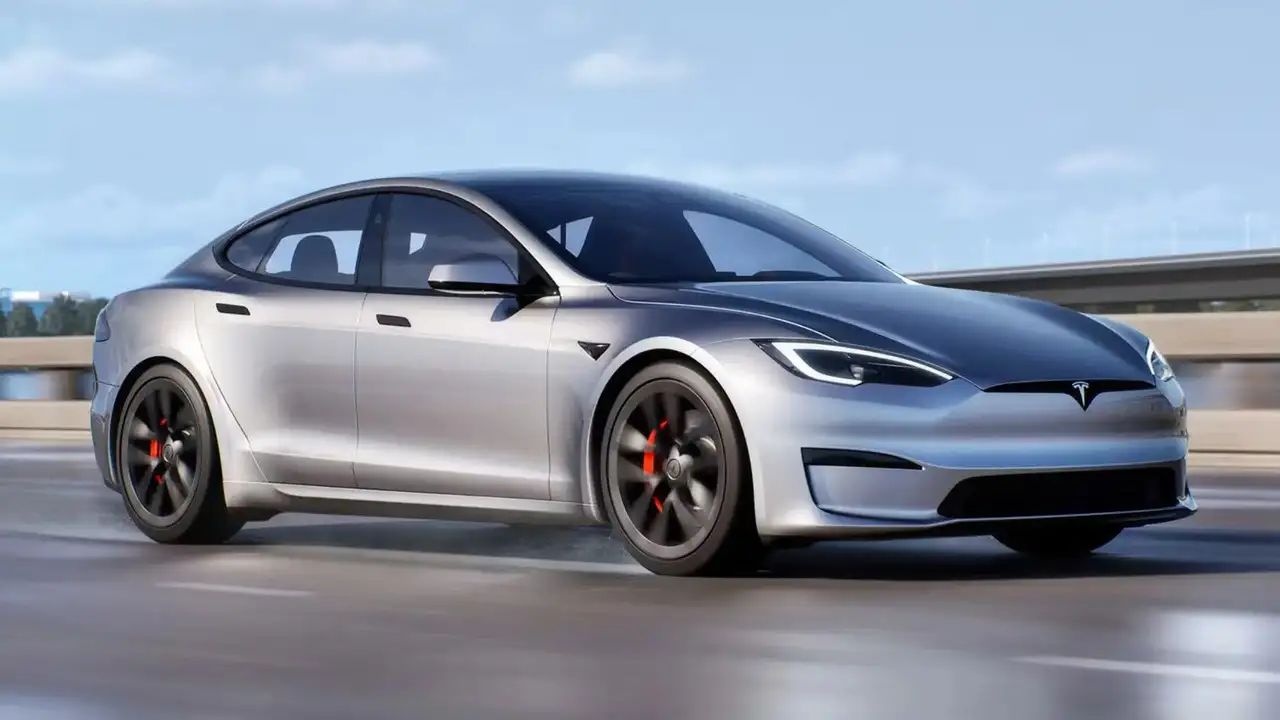
In a remarkable shift within the American automotive landscape, the cherished tradition of frequently upgrading one’s vehicle is gradually giving way to an era of enduring ownership. The statistics are striking: the average car owner’s vehicle is now 13.9 years old, a significant jump from 11.4 years in 2014, and some reports even place the average age of vehicles on the road in the U.S. at a record high of 12.8 years in 2025. This isn’t merely a fleeting trend; it’s a profound reorientation of consumer behavior, deeply influenced by a confluence of engineering advancements, evolving societal norms, and stark economic realities.
For generations, the allure of the new car — with its fresh scent, cutting-edge design, and the promise of trouble-free motoring — has been a powerful draw. Yet, as the years tick by, more and more drivers are finding compelling reasons to resist this cyclical upgrade, choosing instead to invest in the longevity of their current automobiles. This decision is not simply about thrift; it speaks to a deeper understanding of value, sustainability, and a growing skepticism towards the rapid pace of technological obsolescence in the automotive sector.
What drives this profound shift? Is it solely the economy, or are there more intricate forces at play, fundamentally reshaping our relationship with our cars? As we delve into the multifaceted explanations behind this phenomenon, we uncover a fascinating narrative of innovation meeting inertia, where the practical benefits of keeping an older vehicle often outweigh the perceived advantages of a brand-new one. The journey into these reasons promises to be insightful, revealing both the tangible improvements in vehicle quality and the complex psychological and financial calculus of modern car ownership.

1. **Better Engines**The old adage, “They don’t make them like they used to,” often conjures images of classic cars with distinctive styles and the satisfying rumble of a non-fuel-injected engine. While there’s undeniable nostalgia for these aesthetic and auditory qualities, the truth is that modern vehicles are, in many critical respects, built to last far longer than their predecessors. The advancements in engine technology represent a cornerstone of this increased longevity, directly translating into more miles and more years on the road for today’s cars.
Fifty years ago, a typical car in 1973 would feature an underpowered carbureted engine, often requiring regular “tune-ups” by a mechanic to prevent misfires. Mineral oil-based lubricants, prone to chemical instability and heat degradation, necessitated habitual changes to prevent engine failure. Such components contributed to a much shorter expected lifespan, with many vehicles considered “junk” by 100,000 miles. Today, however, engines are fundamentally superior, designed with precision engineering and materials that withstand the rigors of extensive use.
The shift from carburetors to sophisticated fuel injection systems, coupled with advanced computerized ignition systems, ensures optimal running conditions and proactively warns of potential issues. Synthetic lubricants, a significant leap forward, are far more tolerant of heat, maintain chemical stability for extended periods, and boast much longer service lives. These innovations collectively mean that the parts essential for a car’s operation simply last longer, enabling vehicles to routinely surpass 250,000 miles, a testament to modern engineering prowess.
Read more about: Training the Dog? 11 E-Collars We’re Definitely Leaving on the Shelf.

2. **Remote Work Means Less Driving**The advent and widespread adoption of remote work, particularly accelerated by global events, has profoundly altered daily commuting patterns and, consequently, the wear and tear on personal vehicles. For millions, the daily grind of bumper-to-bumper traffic or long stretches of highway is no longer a mandatory routine. This dramatic reduction in mileage has a direct and significant impact on how long cars remain viable and operational.
Fewer miles traveled per person invariably means less exposure to the stresses that degrade a vehicle over time. Engine cycles are reduced, transmission shifts are fewer, and brakes endure less friction. Components that typically wear out with high usage, such as tires, suspension parts, and various fluid systems, experience a slower rate of deterioration when the car is simply not on the road as much.
Beyond the mechanical benefits, less driving also translates to fewer opportunities for accidents, minor scrapes, and exposure to adverse environmental conditions. A car parked in a garage or driveway is spared the constant bombardment of road debris, harsh weather, and the general abuse of daily commuting. This preserved state means that vehicles effectively age slower, allowing owners to comfortably extend their ownership period without facing the premature maintenance and repair demands that once accompanied higher mileage.
Read more about: 12 Dealership Tactics You Must Master Before Your Next Car Negotiation

3. **Modern Cars Don’t Rust As Much**Rust, the insidious enemy of automotive longevity, has historically been a primary factor in a vehicle’s demise. Not only does it mar a car’s aesthetic appeal, but more critically, it compromises the structural integrity of the frame, leading to safety concerns and costly repairs. Mechanics often refuse to put heavily rusted cars on a lift, fearing structural collapse, highlighting the severity of this issue in older models. However, significant advancements in materials science and manufacturing processes have largely mitigated this threat in contemporary vehicles.
Fifty years ago, cars were typically constructed with painted steel frames, offering minimal resistance to corrosion. Within months of leaving the showroom, and often despite aftermarket “rustproofing” services, these vehicles would begin to show signs of rust. Today’s automotive engineering tells a different story. Most vehicles manufactured after 2006 now feature galvanized steel frames, which are steel coated with a layer of corrosion-resistant zinc. This protective barrier dramatically slows down the oxidation process.
Furthermore, reliable undercoatings are applied to critical areas, offering an additional layer of defense against moisture, salt, and other corrosive elements encountered on the road. These innovations mean that while older cars still require vigilance and upkeep to combat rust, for modern vehicles, corrosion is far less of an inherent design flaw. This enhanced resistance to rust and corrosion ensures that the vehicle’s structural backbone remains sound for a much longer period, removing a significant historical reason for premature scrapping.
Read more about: Why Your Custom Mods Might Be Fighting the Engineers: 12 Exterior Design Elements Car Designers Really Wish You’d Leave Alone

4. **Fewer Two Car Families**The traditional model of a household operating multiple vehicles, often one for each adult driver, is undergoing a quiet but noticeable transformation. With evolving family dynamics, primarily influenced by the rise of remote work, and the escalating costs associated with vehicle ownership, more families are consciously opting to maintain just one car. This strategic decision to consolidate vehicle ownership has a direct consequence on how long that single vehicle remains in service.
When a family relies on a single vehicle, that car often becomes a central, shared asset, prompting a more considered approach to its maintenance and longevity. Owners are more likely to invest in timely repairs, regular servicing, and preventive care, understanding that the vehicle’s uninterrupted operation is crucial for the entire household’s mobility. This enhanced commitment to upkeep naturally extends the car’s useful life, as neglect, which often shortens a vehicle’s lifespan, is far less likely.
Moreover, families are increasingly recognizing that cars are not typically appreciating assets; they represent a significant financial outlay. Rather than incurring the substantial expense of purchasing and maintaining a second vehicle, which includes additional insurance, registration, and fuel costs, the smarter financial choice often involves maximizing the utility and lifespan of a single, well-maintained automobile. This economic rationale, combined with reduced driving needs due to remote work, cultivates an environment where keeping a car longer isn’t just a possibility, but a practical and often preferred strategy.
Read more about: 8 Outdated Car Habits to Stop Now: Driving Smarter for a Sustainable and Safer Future

5. **Advanced Safety Features**The proliferation of advanced safety features in modern vehicles marks a paradigm shift not only in passenger protection but also in the lifespan of the car itself. Innovations like collision detection, automatic emergency braking, lane-keeping assist, and adaptive cruise control are not merely conveniences; they are proactive systems designed to prevent accidents or mitigate their severity. This dramatic reduction in crash frequency is a compelling reason why vehicles are staying on the road for longer periods.
Fewer accidents mean fewer write-offs and fewer instances of severe damage that could necessitate premature replacement. Even when minor incidents do occur, the intelligent design of modern vehicles, coupled with these safety systems, often minimizes the impact. The primary goal is to avoid the collision altogether, and these technologies are proving remarkably effective in doing so, thereby preserving the vehicle’s structural integrity and overall condition.
It is true that when newer vehicles *do* get into accidents, their advanced sensors, complex frames, and integrated technologies can make repairs more expensive, sometimes leading insurance companies to declare them total losses. However, the critical factor is that these cars are simply *getting into crashes less often*. This fundamental decrease in accident frequency directly reduces the need to purchase a new car, enabling owners to drive their technologically safeguarded vehicles for many more years with increased confidence and safety.
Read more about: Need a Ride? 15 Used Car Models You’ll Want to Steer Clear Of This Year for Hassle-Free Driving

6. **Fewer Cheap New Cars**One of the most undeniable forces driving extended vehicle ownership is the significant and continuous escalation in the cost of new cars. The era of readily available, truly affordable new vehicles appears to be largely behind us, a stark contrast to the automotive market of just a decade ago. This upward trajectory in pricing has fundamentally reshaped consumer expectations and buying habits, making the prospect of a new car purchase a much more daunting financial proposition.
Consider the data: “Currently, the cheapest new car in the United States is around $18,000. That’s up quite a bit from just over $10,000 in 2010.” This nearly doubling of entry-level pricing in a relatively short period is a formidable barrier for many prospective buyers. The once-common practice of trading in an older vehicle for a modestly priced new model has become economically challenging, especially for those new to the labor market or those on tighter budgets.
Furthermore, many of the affordable models that once populated dealership lots, such as the Chevrolet Cruze and Hyundai Accent, have been discontinued. This trend leaves a significant void in the budget-friendly segment, effectively forcing consumers to either stretch their finances for more expensive options or, more commonly, to reconsider the necessity of a new purchase altogether. As new cars become less accessible, the value proposition of maintaining a reliable older vehicle grows substantially, making extended ownership a pragmatic financial choice.
Read more about: 8 Outdated Car Habits to Stop Now: Driving Smarter for a Sustainable and Safer Future

7. **New Cars Aren’t Very Private**In an increasingly data-driven world, the modern automobile has evolved far beyond a mere mode of transportation; it has become a mobile data collection hub. This transformation, while offering certain conveniences, introduces significant privacy concerns that are compelling an increasing number of drivers to stick with their older, less intrusive vehicles. The pervasive collection of user information and tracking of driving habits by newer models is a growing source of unease.
New cars frequently require owners to download associated apps, which then monitor and record various aspects of their driving behavior. This can include everything from routes taken and speeds maintained to braking patterns and infotainment usage. Such data, often transmitted and stored by manufacturers or third-party services, raises legitimate questions about how personal information is utilized, protected, and potentially shared. For many, the erosion of privacy on the road is a deal-breaker.
The simplicity of older cars, where a physical key was the primary interface and data collection was virtually non-existent, stands in stark contrast to the sophisticated, networked vehicles of today. Drivers who value their autonomy and privacy often view these integrated tracking systems as an unwelcome intrusion rather than an advancement. Consequently, the desire to avoid relinquishing personal data to their vehicle’s manufacturer or associated services becomes a powerful motive for prolonging the life of their current, less “connected,” automobile.
Read more about: Unleashed Beasts: A Deep Dive into Lamborghini’s 8 Coolest Concept Cars Ever Made

8. **They Aren’t Quite Ready for an Electric**The automotive industry is in the midst of a revolutionary transition towards electric vehicles (EVs), yet a significant portion of the driving public remains hesitant to fully embrace this change. Despite the environmental benefits and evolving performance capabilities, there are several key factors, primarily related to range anxiety and purchase price, that are causing potential buyers to delay their adoption of EVs and, by extension, hold onto their internal combustion engine (ICE) vehicles for longer.
A substantial 62% of prospective buyers, according to the provided context, are actively “waiting for the range to go up and the price to come down before considering an EV.” This statistic underscores a widespread practical concern. While EV ranges are improving, the perception of limited range, coupled with an still-developing charging infrastructure, creates uncertainty for many drivers accustomed to the widespread availability of gas stations and quick refueling times. The psychological comfort of a known and proven technology remains a powerful pull.
Furthermore, the initial investment required for an EV often represents a significant leap compared to a comparable gasoline-powered vehicle, despite potential long-term savings on fuel and maintenance. This cost barrier, combined with the desire for further technological maturation—such as faster charging speeds and even greater range—means that many consumers view the current EV market as one in transition, not yet fully optimized for their needs and budgets. This anticipation of future improvements fosters a “wait-and-see” approach, extending the lifespan of their current vehicles until the electric revolution fully aligns with their practical and financial readiness.
Read more about: Unleashed Beasts: A Deep Dive into Lamborghini’s 8 Coolest Concept Cars Ever Made
9. **New Features are Less Desirable**While innovation is often celebrated, not every technological advancement in modern vehicles is met with universal enthusiasm from the driving public. Indeed, for a significant segment of consumers, certain contemporary features, far from being attractive selling points, actively contribute to their decision to delay a new car purchase and instead prolong the life of their existing vehicle. This nuanced perspective on automotive progress underscores a broader resistance to changes that are perceived as intrusive or simply not beneficial to their driving experience.
Consider, for instance, the polarizing auto start and stop technology, a system designed primarily to reduce emissions and optimize fuel consumption by shutting off the engine when the car is idling. While environmentally sound in theory, many drivers find its operation jarring and counter-intuitive, leading to frustration rather than satisfaction. Similarly, continuously variable transmissions (CVTs), engineered for smooth acceleration and efficiency, often receive criticism for their detached driving feel, a marked departure from the more engaging, direct response of traditional automatic or manual gearboxes. These innovations, intended to improve the vehicle, paradoxically deter some potential buyers.
This sentiment reveals a deeper psychological attachment to established norms of vehicle operation. Drivers who have grown accustomed to a particular way their car starts, idles, and accelerates often prefer the familiar, predictable mechanics of an older model over the unfamiliar sensations and perceived compromises of newer systems. The value proposition of a new car, therefore, isn’t solely judged on its novelty, but on how seamlessly its new features integrate with, or disrupt, a driver’s ingrained habits and preferences.
For many, the perceived annoyances of these newer features outweigh their promised benefits, solidifying the choice to maintain a vehicle that, while perhaps lacking the latest tech, offers a more consistent and comfortable driving experience. It’s a compelling reminder that the ‘best’ technology isn’t always about the newest, but rather what best serves the user’s practical and psychological comfort.
Read more about: Need a Ride? 15 Used Car Models You’ll Want to Steer Clear Of This Year for Hassle-Free Driving

10. **Touchscreens**The interior landscape of the modern automobile has undergone a dramatic transformation, largely spearheaded by the widespread adoption of large, centralized touchscreens, a trend famously popularized by Tesla. These digital interfaces, designed to consolidate controls and offer a sleek, minimalist aesthetic, have become a defining characteristic of new vehicles. Yet, this shift from tactile buttons and dials to a predominantly screen-based interaction is proving to be a significant point of contention for many drivers, directly influencing their prolonged loyalty to older models.
While touchscreens offer a sophisticated look and broad functionality, they often come with practical drawbacks that impact daily usability. The absence of physical feedback, such as the satisfying click of a button or the distinct detent of a dial, requires drivers to divert their gaze from the road to precisely locate and actuate controls for essential functions like climate, audio, or navigation. This inherent need for visual confirmation can contribute to increased distraction, raising legitimate safety concerns for those who prioritize immediate, intuitive control.
For a considerable portion of the driving public, the perceived technological ‘upgrade’ of a touchscreen feels more like a downgrade in usability and safety. They value the ability to adjust settings by feel, keeping their eyes on the road and their attention squarely on driving. This preference for traditional, physical controls over digital interfaces is a powerful motivator, leading them to consciously avoid newer vehicles that mandate a touchscreen-centric experience.
Thus, the push towards touchscreens, while appealing to a segment of tech-savvy buyers, inadvertently reinforces the appeal of older cars for drivers who prioritize simplicity, direct control, and an undiluted focus on the act of driving. It highlights a fundamental divergence in what consumers value in their vehicle’s interior experience, effectively making the avoidance of this specific technological evolution a ‘reason’ to keep their current car for longer.
Read more about: Need a Ride? 15 Used Car Models You’ll Want to Steer Clear Of This Year for Hassle-Free Driving

11. **Gas Mileage Might Not Matter**The ongoing pursuit of enhanced fuel efficiency has been a cornerstone of automotive engineering for decades, leading to significant advancements across the industry. Indeed, data suggests that the average fuel efficiency of vehicles has improved by approximately 35% over the past two decades, a commendable achievement that promises environmental benefits and reduced running costs. However, for many car owners contemplating a new purchase, these gains in miles per gallon are increasingly viewed as insufficient to justify the substantial financial outlay of upgrading.
Crucially, the potential annual savings from improved gas mileage often pale in comparison to the towering cost of a new car, particularly when considering financing. While upgrading to a more fuel-efficient vehicle might shave around $350 off annual fuel expenses, this sum barely registers against an average new car payment of $734 per month, which accumulates to nearly $8,800 annually. This stark contrast highlights a significant economic reality: the long-term financial benefits of better fuel economy are simply not potent enough to offset the immediate and substantial burden of a new vehicle loan.
This intricate financial calculus dictates that for a vast number of drivers, retaining their current vehicle, even if it is less fuel-efficient, represents a far more pragmatic and fiscally responsible choice. The absence of a monthly car payment, or a much lower one on an older, paid-off vehicle, creates savings that dwarf any potential gains from reduced fuel consumption. It’s a decision rooted in the fundamental mathematics of personal finance, where avoiding debt often trumps marginal operational cost reductions.
Therefore, while fuel efficiency remains a desirable trait, its role as a primary motivator for new car purchases has diminished for many. The overwhelming financial realities of acquiring a new vehicle have shifted the focus, making the seemingly small, accumulated savings from extended ownership a more compelling argument than the allure of slightly improved gas mileage. This trend reflects a savvy consumer base prioritizing overall financial health over isolated, albeit real, operational efficiencies.
Read more about: Are You That Enthusiast? Unmasking the 11 Automotive Hurdles That Annoy Collectors and Neighbors Alike.
12. **Insurance Costs are Higher**In the intricate web of vehicle ownership expenses, insurance premiums represent a significant and often underestimated factor. Counter-intuitively, as vehicles become more technologically advanced, they also tend to become more expensive to insure, presenting another compelling reason for drivers to extend the lifespan of their older cars. The perception that newer equals cheaper, especially in the long run, is increasingly being challenged by the realities of modern automotive design and repair costs.
The heart of this issue lies in the sophisticated technology embedded within contemporary vehicles. Today’s cars are brimming with an array of sensors, complex computer systems, and advanced battery packs, all integral to their operation and safety features. While these components enhance driving and protection, their intricate nature means that even minor accidents can necessitate incredibly expensive repairs. Replacing a bumper, for instance, might now involve recalibrating multiple sensors, inflating the overall cost of even seemingly minor damage.
Consequently, insurance providers, who bear the brunt of these repair costs, adjust their premiums upwards for newer, more complex models. The higher potential payout for repairs or total losses directly translates into increased monthly or annual fees for car owners. An older car, with its simpler mechanical systems and fewer integrated electronic components, typically presents a lower risk profile from a repair cost perspective, making it more affordable to insure.
This financial reality significantly influences the decision-making process for many Americans. When faced with the prospect of higher insurance rates on top of elevated purchase prices, the economic appeal of maintaining an older, less costly-to-insure vehicle becomes undeniably strong. It is a calculated move to mitigate ongoing ownership expenses, allowing drivers to allocate their financial resources more effectively, further solidifying the trend of extended vehicle ownership.
Read more about: Beyond the Bumper: 14 Fender Bender Mistakes Drivers Make That Body Shops Really Wish You’d Stop Minimizing

13. **Dealerships**The journey of acquiring a new vehicle, for many consumers, is anything but a joyous occasion. Rather than an exciting step, the process of navigating a car dealership often evokes feelings of stress, anxiety, and even dread. This deeply ingrained negative perception of the car-buying experience itself has emerged as a surprisingly potent, albeit indirect, motivator for Americans to delay new purchases and instead cherish their current, older automobiles for longer periods.
Consider the multifaceted pressures inherent in the traditional dealership model. Prospective buyers often face an exhaustive process laden with excessive paperwork, convoluted negotiations involving multiple sales staff and managers, and the daunting prospect of financing discussions that can feel opaque and overwhelming. This intricate dance, designed to optimize sales for the dealership, often leaves consumers feeling fatigued, pressured, and questioning whether the effort was truly worthwhile.
Such an emotionally taxing and time-consuming ordeal stands in stark contrast to the relative simplicity of maintaining an existing vehicle. The investment in repairs or routine service, while certainly requiring attention and cost, generally lacks the high-stakes, adversarial dynamic associated with a new car transaction. The peace of mind derived from avoiding the showroom floor becomes a significant, albeit unspoken, advantage of extended ownership.
Ultimately, the desire to bypass the widely disliked dealership experience is a powerful psychological deterrent to new car acquisition. For many, the value of their time, their emotional well-being, and the avoidance of perceived manipulation far outweigh the allure of a brand-new model. It’s a testament to the fact that the ‘purchase experience’ itself, not just the product, profoundly shapes consumer choices, driving more Americans to simply keep what they already have.
Read more about: Uncovering Unprecedented Value: A Consumer’s Guide to 12 SUVs with Significant Price Drops in 2025
14. **Interest Rates**The macroeconomic environment, particularly the trajectory of interest rates, casts a long shadow over consumer purchasing decisions, nowhere more acutely felt than in the realm of automobile financing. The fluctuations in lending rates can dramatically alter the affordability and perceived value of a new car, serving as a critical determinant in why many Americans are choosing to extend the lifespan of their current vehicles. This financial lever exerts immense influence, shifting buying intentions and solidifying prolonged ownership trends.
Indeed, the recent history of interest rates provides a clear illustration of this impact. Following a period of historically low rates around 2020, partly influenced by the pandemic and expansive monetary policies, the economic landscape shifted. As the Federal Reserve responded to inflationary pressures, interest rates surged, climbing as high as 7.48% in 2023. This rapid ascent fundamentally reshaped the financial feasibility of new car loans for millions of prospective buyers, transforming an attractive prospect into a daunting one.
High interest rates directly translate into significantly higher total costs over the life of a loan, inflating monthly payments and making the overall purchase far more expensive than the sticker price suggests. For many households, particularly those managing tight budgets or navigating broader economic uncertainties, this added financial burden is simply prohibitive. The dream of a new car quickly succumbs to the cold, hard reality of unsustainable monthly installments, halting their buying journey outright.
Consequently, the prevailing high interest rates act as a formidable barrier, compelling a substantial portion of the population to shelve their new car aspirations. Rather than committing to an expensive loan that eats into their disposable income for years, the rational choice becomes to continue driving their existing, paid-off or lower-interest-financed vehicle. This powerful economic force underscores why the decision to keep a car longer is not just about preference, but often a necessity driven by market conditions.
Read more about: Training the Dog? 11 E-Collars We’re Definitely Leaving on the Shelf.

15. **Ridiculous Prices**The culmination of various economic pressures has created an unprecedented scenario in the automotive market: vehicle prices, both new and used, have ascended to levels that many consumers describe as “ridiculous.” This overarching challenge of affordability, exacerbated by a confluence of factors, represents perhaps the most powerful and immediate reason why Americans are steadfastly holding onto their vehicles for longer than ever before. The sheer cost of entry into the new, or even used, car market is a formidable deterrent.
Across the board, the costs associated with vehicle ownership are squeezing American consumers from multiple directions. Beyond the direct purchase price, rising insurance rates, persistently high gas prices, and the decreasing availability of smaller, more affordable car models all contribute to a feeling of being financially cornered. This challenging environment sets the stage for the dramatic price increases observed in recent years, making any car purchase a substantial financial leap.
The onset of the COVID-19 pandemic in 2020, which triggered widespread production shutdowns and supply chain disruptions, served as a catalyst for this price surge. Dealership lots, once bustling with inventory, became conspicuously bare, driving up demand and consequently prices. The data is stark: new cars are now approximately 29% more expensive than before the pandemic, while used cars have seen an even steeper rise of about 34%. Considering that the lowest MSRP for a new vehicle currently sits around $18,000, these percentages translate into thousands of additional dollars for consumers.
This dramatic escalation in pricing has fundamentally reshaped consumer expectations and capabilities. The question that resonates across dinner tables and online forums is not just ‘can I afford a new car,’ but ‘when will new car prices come down?’ Until that elusive shift occurs, the reality of prohibitive costs reinforces the decision for millions to simply maintain their current ride. It’s a pragmatic survival strategy in an automotive market that has, for now, moved beyond the reach of many.
Read more about: Beyond the Graceland Gates: 14 Defining Chapters in the Extraordinary Life of Elvis Presley
In essence, the prolonged lifespan of American vehicles is not merely a statistical anomaly but a profound reflection of a society grappling with evolving technological landscapes, shifting financial realities, and a re-evaluation of what constitutes true value. From the intricate calculus of feature desirability and insurance premiums to the often-dreaded dealership experience and the undeniable impact of interest rates and escalating prices, a multifaceted narrative emerges. It’s a story of discerning consumers making informed, often reluctant, choices to invest in the longevity of their current cars, prioritizing practicality, financial prudence, and personal comfort over the ephemeral allure of the new. This trend, deeply woven into the fabric of modern American life, challenges traditional notions of consumption and signals a powerful, enduring commitment to the vehicles that faithfully serve their owners through thick and thin.



